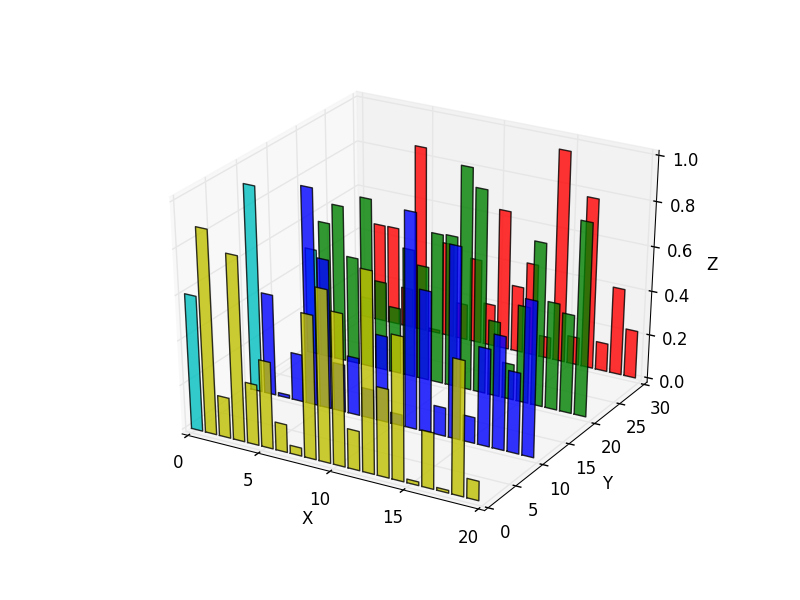Gnuplot Region - 🚧 Not yet available - Сообщения
http://gnuplot.cvs.sourceforge.net/gnuplot/gnuplot/Copyright
I don't know if this would allow to make open source plugins for a closed source software.
Edit:
Please, see Distribution terms
I prefer the text based interface over deep trees of options, where changing an axis limit requires 10 mouse clicks.
Perhaps just displaying an externally generated image as with the maple plot would be sufficient.
Wrote
Perhaps just displaying an externally generated image as with the maple plot would be sufficient.
I already suggested Asymptote (LGPL)
http://asymptote.sourceforge.net/
I don't know if it would be possible to dump the data from C# via SMath and then use Asymptote language to render graphs.
sorry for the cofussion
Wroteuni, please take a look at these wrappers for gnuplot:
Gnuplot.C#
Charting with Gnuplot from F#
Yes, I would do it exactly the same way. I need to think how to use it.
maple may have more functions for plotting but could not generally be recommended due to license issues.
Unfortunately, there seems to be no easy access from c# to matplotlib. Otherwise that would be a really good alternative.
WroteUnfortunately, there seems to be no easy access from c# to matplotlib. Otherwise that would be a really good alternative.
There is a way. Use a call to python as an external program. I can save image to a file and load it into SMath Studio (as for Maple Plot). But the end user must install Python itself and two libraries: mathplotlib and numpy. I've tried it, it basically works. This is the only way at the moment.
import matplotlib.pyplot as plt
import numpy as np
import io
fig = plt.figure()
ax = fig.add_subplot(111, projection='3d' )
for c, z in zip(['r', 'g', 'b', 'y'], [30, 20, 10, 0] ):
xs = np.arange(20)
ys = np.random.rand(20)
# You can provide either a single color or an array. To demonstrate this,
# the first bar of each set will be colored cyan.
cs = [c] * len(xs)
cs[0] = 'c'
ax.bar(xs, ys, zs=z, zdir='y', color=cs, alpha=0.8 )
ax.set_xlabel('X' )
ax.set_ylabel('Y' )
ax.set_zlabel('Z' )
plt.savefig("Example.png", format = 'png' )

best regards and many thanks for these graphical plugins,
w3b5urf3r
WroteWroteUnfortunately, there seems to be no easy access from c# to matplotlib. Otherwise that would be a really good alternative.
There is a way. Use a call to python as an external program. I can save image to a file and load it into SMath Studio (as for Maple Plot). But the end user must install Python itself and two libraries: mathplotlib and numpy. I've tried it, it basically works. This is the only way at the moment.
That looks good. Besides the mentioned install requirements there is perhaps no chance for interactive mouse control. Still better than maple, where there are license issues and the image quality is worse.
However, non-interactive graphics nowadays are suited for die-hard users and probably not accepted by normal users. Perhaps an option is to provide some sort of generic wrappers that provide comfortable access to basic plotting plus a scripting window.
Btw, how about Sympy? I don't now, if that outperforms mapleV, but it is free both as in beer and in speech.
http://en.smath.info/forum/yaf_postsm9615_ODESolvers-plugin.aspx#post9615
As far as I know IronPython forms part of the .net environment so it might be possible to access Matplotlib, SimPy, NumPy and SciPy, with IronPython.
WrotePlease see the last resources of this post :
http://en.smath.info/forum/yaf_postsm9615_ODESolvers-plugin.aspx#post9615
As far as I know IronPython forms part of the .net environment so it might be possible to access Matplotlib, SimPy, NumPy and SciPy, with IronPython.
It may be possible, but very difficult. I still can't figure out how it can be obtained at the form of .Net assembly (dll).
ЦитатаBtw, how about Sympy?
We can't use SymPy because its syntax is very different from the Maple. For example: diff( sin(x), x$2) (Maple), diff(diff(sin(x),x),x) (SMath Studio), sin(x).diff(x,x) (SymPy)
NumPy and SciPy for IronPython / .Net
As for IronPython in general, there seems to be some info in this tutorial:
http://ironpython.googlecode.com/svn-history/r62/trunk/tutorial/tutorial/ironpython-tutorial.pdf
search for "Connecting Python to .NET" within the pdf.
Another possibility to explore is ironlab
WroteHave you checked this specific tools for visualstudio ?
NumPy and SciPy for IronPython / .Net
As for IronPython in general, there seems to be some info in this tutorial:
http://ironpython.googlecode.com/svn-history/r62/trunk/tutorial/tutorial/ironpython-tutorial.pdf
search for "Connecting Python to .NET" within the pdf.
Another possibility to explore is ironlab
I downloaded and installed the extension for Visual Studio 2010. In the standard wizard the dll project can not be selected. In addition, the script will still run through command line utility.
Then I downloaded the book: Programmer to Programmer - Mueller J.P. - Professional IronPython [2010, PDF, ENG]
It describes a method of how to use the script inside the assembly - Chapter 14. Interacting with the DLR. Using this method it is possible to obtain a plugin in the form of one large assembly. But, its not so easy.
Uni, now that you and Martin talk about symbolic engines, could you take a look at this one with LGPL license ?
Mathomatic
Maxima seems to have more features than Mathomatic but its GPL license is incompatible with Smath.
However you may be interested in seeing a way to access Maxima via commandline.
As for large and difficult. Similarly, you need to have IronPython within the plugin. In addition, there need to place libraries for the NumPy and mathplotlib. I don't know how to make it all work together. Here it is important to consider the version of each of the parts. That is why it is difficult.
Jasymca like me more. I think it can be made part of SMath Studio.
- Новые сообщения
- Нет новых сообщений
